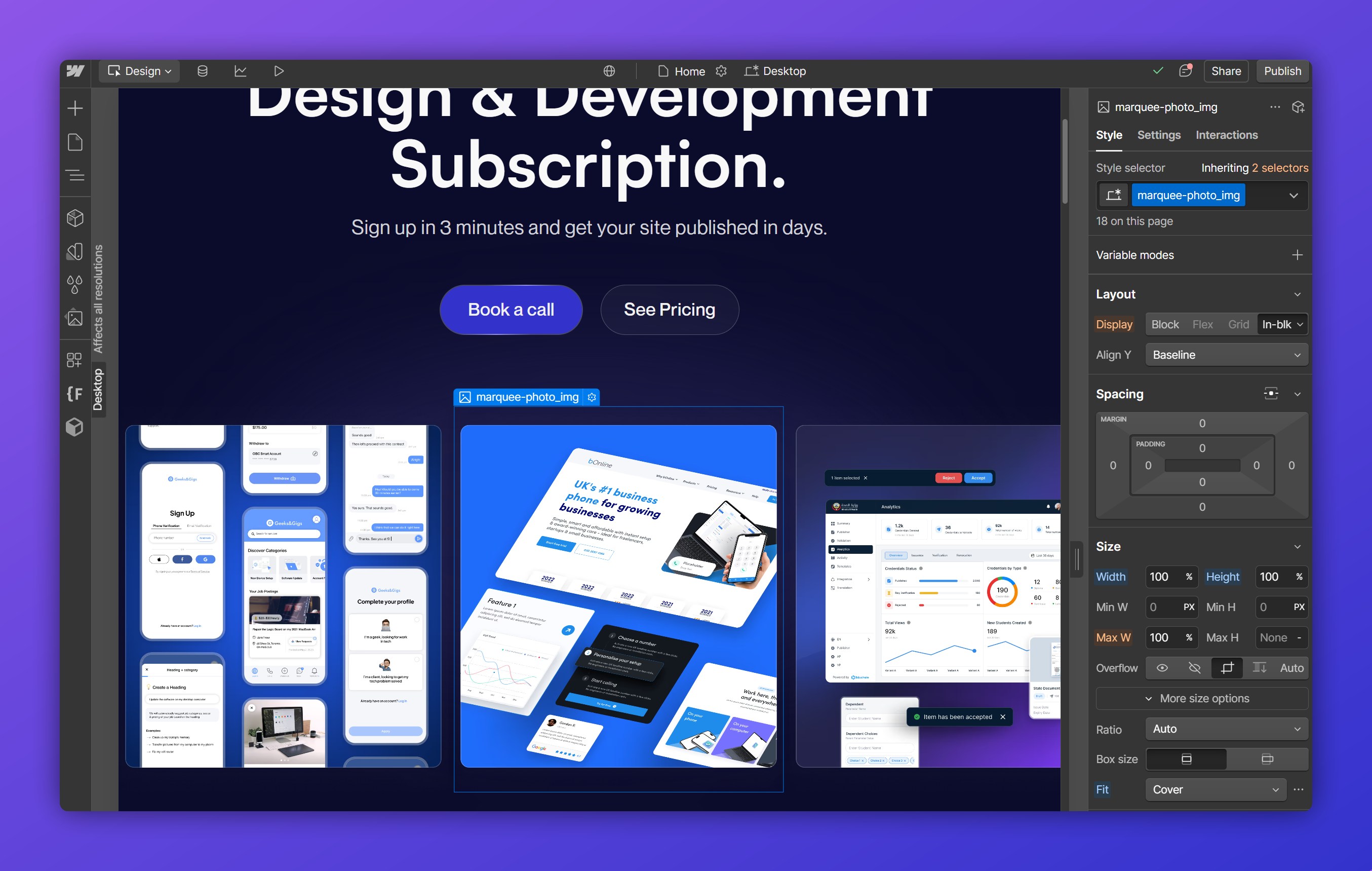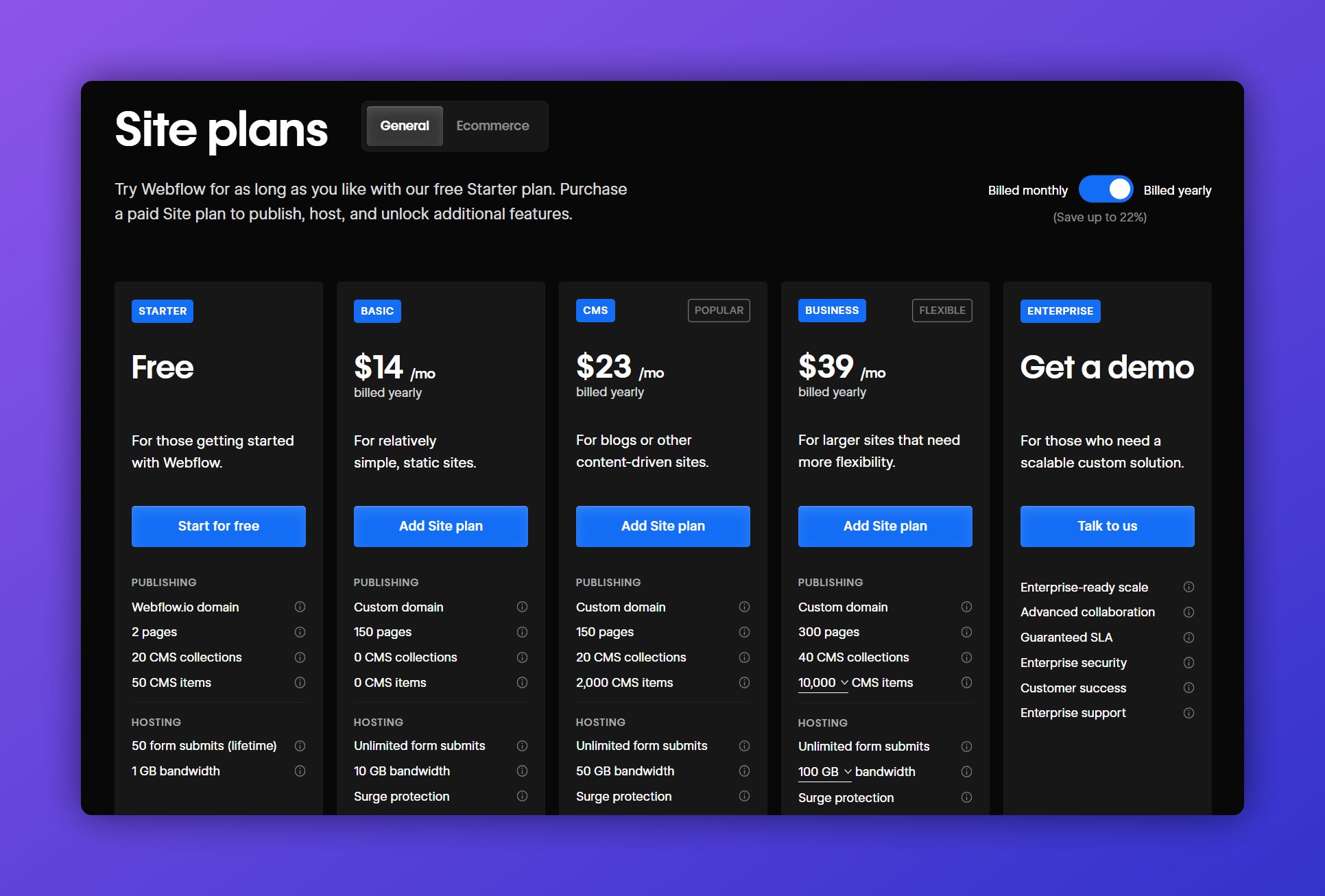TL;DR
In 2025, Webflow and Wix remain prominent website builders, each catering to different user needs.
Webflow: Offers advanced design flexibility, a comprehensive visual editor, and robust SEO controls, making it suitable for users with design experience or those willing to invest time in learning. However, it comes with a steeper learning curve and higher pricing tiers for advanced features.
Wix: Provides an intuitive drag-and-drop interface, extensive template library, and affordable pricing plans, ideal for beginners or those seeking quick and easy website setup. It offers built-in SEO tools but with less design flexibility compared to Webflow.
Choose Webflow if you need high customization and are comfortable with a more complex interface. Opt for Wix if you prefer simplicity and speed in getting your website online.
When it comes to building a website in 2025, two of the most popular platforms stand out: Webflow and Wix. Both offer unique features, capabilities, and pricing structures that cater to different user needs. Whether you're a designer looking for pixel-perfect control, a beginner who wants a hassle-free setup, or a business owner - choosing the right platform is crucial.
In this article, we'll break down the differences between Webflow and Wix in terms of ease of use, customization, SEO capabilities, pricing, and support. By the end, you'll have a clear understanding of which platform suits your needs best.
Overview of Webflow
Purpose and Functionality
Webflow is a powerful visual web development platform designed for users who want greater control over their website's design and functionality. Unlike traditional website builders, Webflow allows users to design, build, and launch fully responsive websites without needing to write extensive code.

Key Features
- A comprehensive visual editor that offers pixel-perfect precision.
- Advanced customization capabilities, including CSS grid, flexbox, and interactions.
- A built-in CMS for dynamic content management.
- Scalable e-commerce solutions.
- Clean, semantic code generation that enhances website performance and SEO.
Pros and Cons
Pros:
- High design flexibility with extensive customization options.
- Clean code generation for improved performance and SEO.
- Scales well for complex projects and businesses.
- Strong CMS capabilities for content-driven sites.
Cons:
- Steeper learning curve for beginners.
- Higher pricing tiers for advanced features.
Overview of Wix
Purpose and Functionality
Wix is a user-friendly website builder designed for quick and easy website creation. With its intuitive drag-and-drop editor, users can build websites without any coding experience.

Key Features
- Hundreds of pre-designed templates for various industries.
- A simple drag-and-drop editor for easy customization.
- An extensive app market to add functionalities like forms, booking systems, and e-commerce.
- Built-in SEO tools to help users optimize their sites.
Pros and Cons
Pros:
- Easy to use, making it ideal for beginners.
- Quick website deployment.
- Affordable pricing plans.
- Large template library with customization options.
Cons:
- Limited design flexibility compared to Webflow.
- Less control over code and performance optimization.
Ease of Use
Webflow
Webflow is best suited for designers or users who want complete control over their site’s layout and functionality. However, the platform has a learning curve, especially for those unfamiliar with web design principles.
Wix
Wix is one of the most user-friendly website builders on the market. With its drag-and-drop functionality, anyone can create a website quickly without needing prior design experience.
Design and Customization
Webflow
Webflow provides extensive design capabilities that allow users to create custom animations and interactions. Its responsive design tools enable pixel-perfect adjustments, and users have complete control over styling, grids, and layouts.
Wix
Wix offers customization options, but these are limited by the constraints of its templates. While the Wix Editor does provide some design flexibility, users may find it restrictive compared to Webflow’s open-ended design system.
SEO Capabilities
Webflow
Webflow generates clean, semantic code, which enhances search engine indexing. It allows for complete customization of meta tags, alt text, and URL structures. The platform automatically generates sitemaps and supports schema markup for better SEO control.
Wix
Wix provides built-in SEO tools, including the Wix SEO Wiz, which guides users through the optimization process. While it is suitable for basic SEO needs, it does not offer the same level of control as Webflow.
Pricing
Webflow

Webflow’s pricing starts at $14 per month for basic site plans. CMS and e-commerce plans are available at higher costs, and advanced features require more expensive pricing tiers.
Wix

Wix’s pricing is more affordable, starting at $16 per month for premium plans. This makes it a budget-friendly option for individuals and small businesses with basic website needs.
Customer Support and Resources
Webflow
Webflow provides access to Webflow University, an extensive resource offering tutorials and guides. The platform also features community forums and dedicated customer support.
Wix
Wix has a comprehensive help center and community forum where users can find answers to common issues. The platform also offers direct customer support for troubleshooting problems.
Conclusion
Both Webflow and Wix are excellent website builders, but they cater to different audiences:
- Choose Webflow if you need advanced design capabilities, custom animations, and full control over your website’s structure.
- Choose Wix if you prefer an easy-to-use platform that allows for quick website creation with built-in tools.
At Nexus Creative, we specialize in Webflow development for businesses looking to scale with custom design, automation, and advanced integrations. If you’re ready to elevate your website with a powerful, flexible platform, contact us today to discuss your project!














